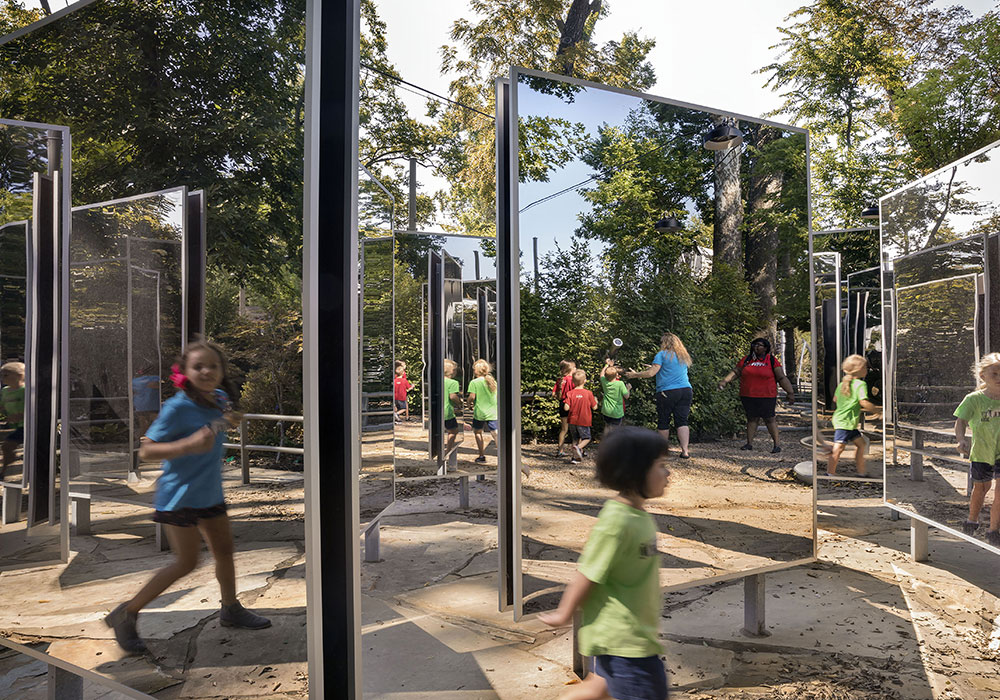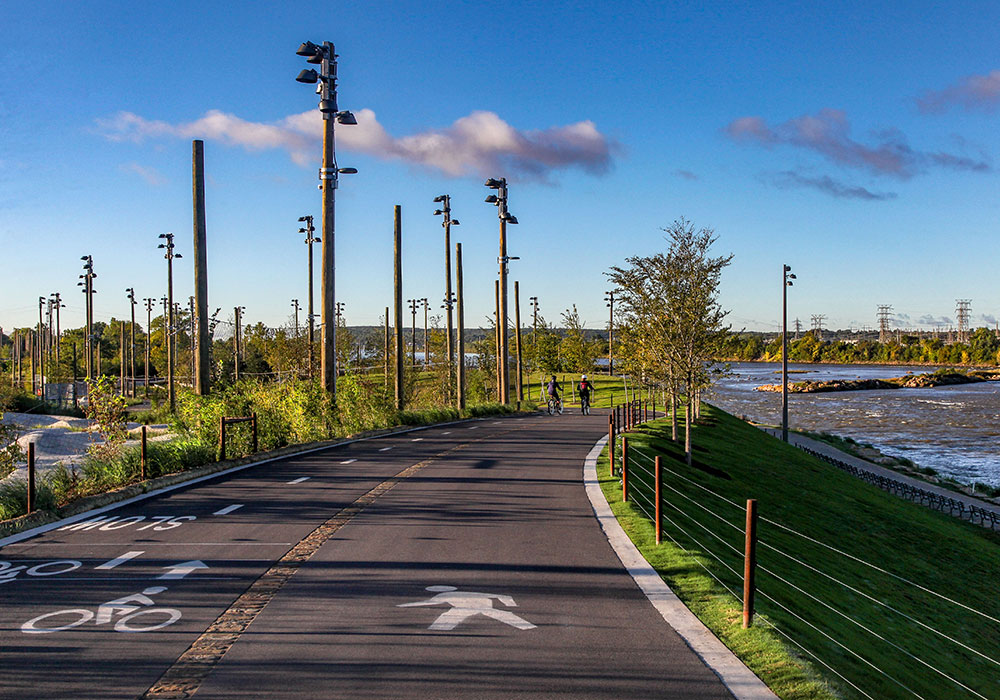Gathering Place: Tulsa, Oklahoma
Like many American communities, Tulsa, Oklahoma, has a long history of social inequality. Discriminatory policies and private practices in housing, education, hiring, and neighborhood investment in the 20th century resulted in a segregated city, with poorer neighborhoods of color concentrated in north Tulsa and more affluent, white neighborhoods located in the south.
Although on paper the discriminatory policies may have ended, the effects of this structural inequality remain. For example, the average life span of residents in north Tulsa is 11 years shorter than those in south Tulsa.
George B. Kaiser, the second-richest man in Oklahoma and a dedicated philanthropist, believed that a unifying, centrally located park space for all Tulsans was one solution to help break down social, racial, and class barriers. To realize this vision, the George Kaiser Family Foundation donated four parcels of land and $200 million for the design and construction of a 100-acre public park. Private donors and foundations also chipped in, combining to make Gathering Place the largest private gift to a community park in U.S. history.

Children playing in a mirrored play area. Photo courtesy A Gathering Place for Tulsa.
Although it was primarily privately funded, the planning and development of Gathering Place included significant public input and collaboration. The planning process included a nine-month period of public meetings and online public comment solicitation starting in 2012. More than 2,000 public comments were gathered, and the project team from the Kaiser Foundation and landscape architecture firm Michael Van Valkenburgh Associates built relationships in the community to gain additional insight and input.
The City of Tulsa also provided $65 million in infrastructure improvements to ensure access to and from the park, expanding and enhancing existing walking and biking trails to link to the park.
The initial 67-acre phase of Gathering Place opened in September 2018 and has been embraced by residents of Tulsa and tourists alike. The annual visitation goal of one million visitors was surpassed within the first five months of operation. The park offers free educational programming and a wide range of art, events, and public festivals to provide activities for all visitors.
After completion of phases two and three of construction, Gathering Place will span 100 acres. Sustainability practices are integrated throughout, including native landscaping, habitat restoration, and energy-efficient lighting.

Cyclists enjoy a multi-use path in the park. Photo courtesy A Gathering Place for Tulsa.
Through its large size, central location, and unique programs, Gathering Place is a cornerstone for the community that helps strengthen community bonds. It also serves as a model for collaborative planning processes and an inspiration for what is possible with strong public-private partnerships.


